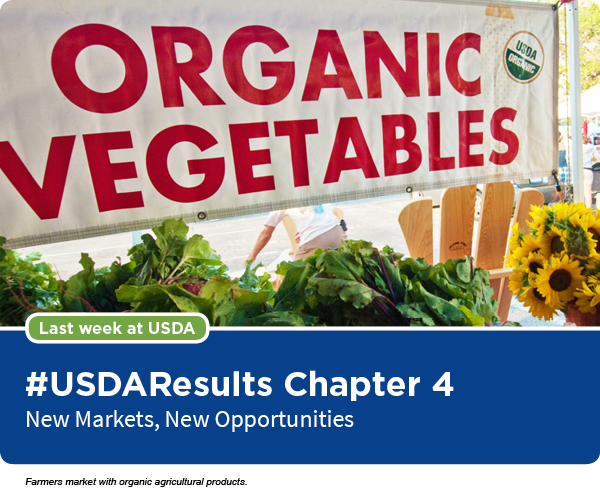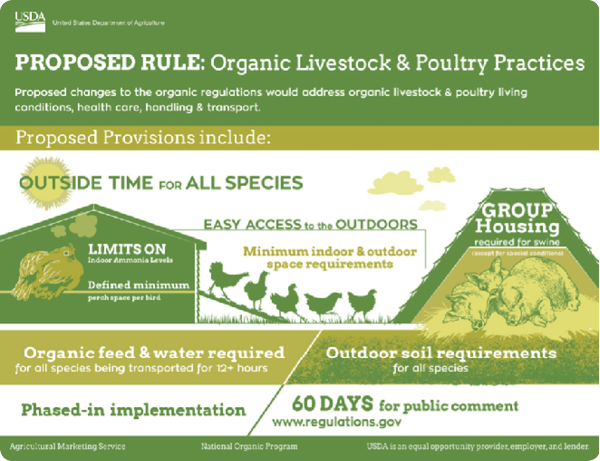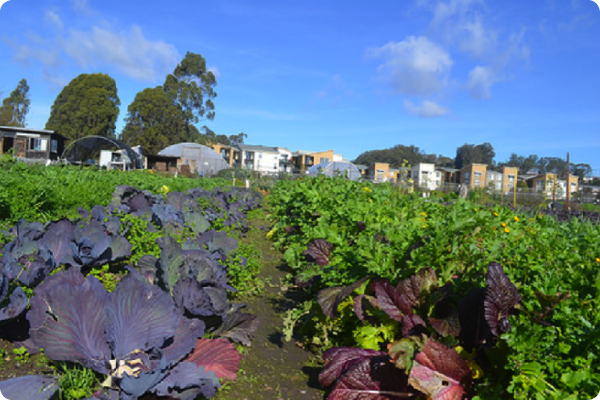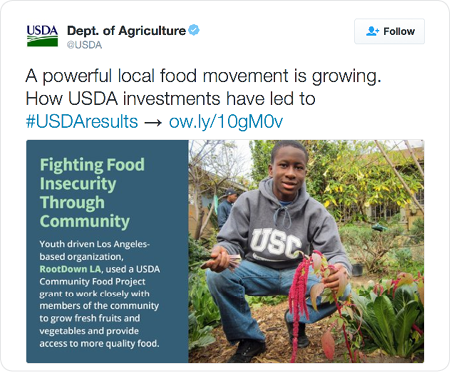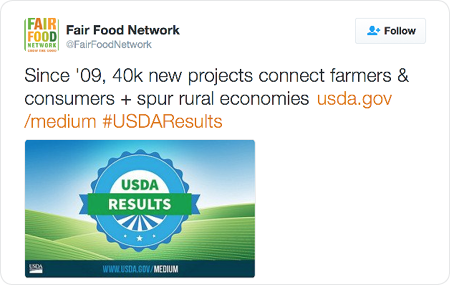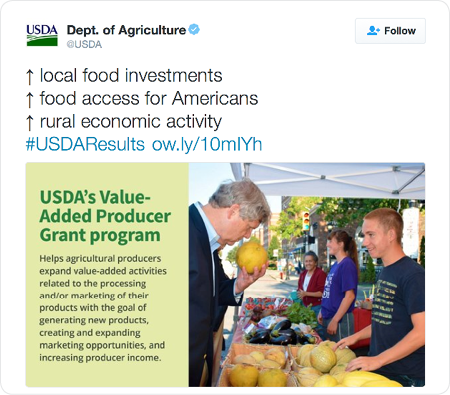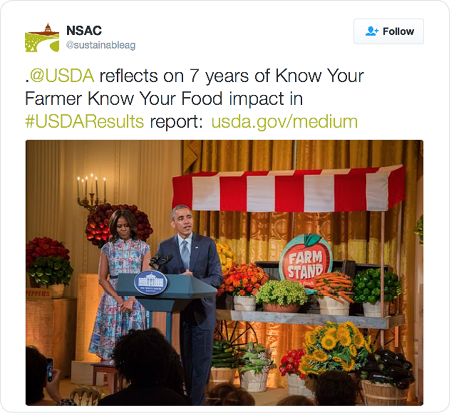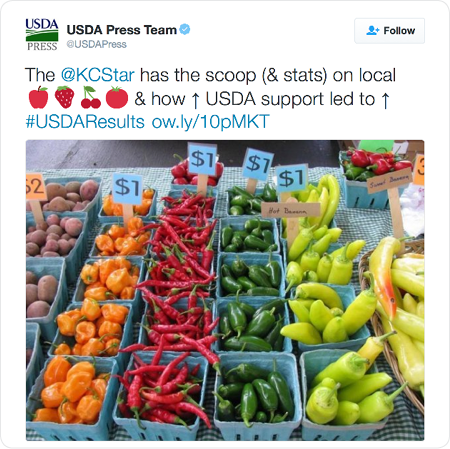Monday, September 12, 2016
Tuesday, August 30, 2016
Sunday, August 28, 2016
Wednesday, August 10, 2016
Fighting invasive species in michigan [feedly]
----
Fighting invasive species in michigan
// Phys.org - latest science and technology news stories
Researchers from Michigan Technological University have received significant grants to tackle Eurasian Watermilfoil and Phragmites. They are developing novel strategies and community-based methods to combat the aquatic invaders.
----
Shared via my feedly newsfeed
Monday, July 25, 2016
Thursday, June 23, 2016
During National Pollinator Week, USDA Announces Key Measures to Improve Pollinator Health
>
> Release No. 0152.16
> Contact:
> Office of Communications (202)720-4623
>
> During National Pollinator Week, USDA Announces Key Measures to Improve Pollinator Health
>
> USDA's Conservation Reserve Program Currently Provides 15 Million Acres of Healthy Forage for Pollinators, and New Partnership Will Ensure Additional High-Quality Habitat in the Future
>
>
> WASHINGTON, June 23, 2016 – Today, during National Pollinator Week and in advance of the U.S. Department of Agriculture's (USDA) seventh annual Pollinator Week Festival, the USDA is announcing two initiatives in support of the President's National Strategy to Promote the Health of Honeybees and Other Pollinators, announced just over one year ago. A review of USDA's most popular conservation program found that farmers and ranchers across the country are creating at least 15 million acres of healthy forage and habitat for pollinators, and the department has also entered into a new partnership with leading honey bee organizations that will help to ensure future conservation projects continue to provide benefits to these important species.
>
> "Pollinators are small but mighty creatures who need our help as much as we need theirs, and that is why USDA is dedicating resources from all corners of our department to boost their habitat and better understand how to protect them," said Agriculture Secretary Vilsack. "In addition to creating healthy habitat and food for pollinators through our conservation work, USDA research is leading to breakthroughs in pollinator survival that may reverse the declines we've seen over the past few decades. We look forward to continued collaboration with America's beekeepers and honey producers to ensure this work is meaningful and effective."
>
> USDA has signed a Memorandum of Understanding with two honey bee organizations, the American Honey Producers Association and the American Beekeeping Federation, to facilitate an ongoing partnership that will ensure USDA's conservation initiatives are as advantageous as possible to pollinators and that beekeepers understand how they can benefit from USDA's conservation and safety net programs. For several years, USDA's Farm Service Agency (FSA) and Natural Resources Conservation Service (NRCS) have worked closely with these groups and others to help improve habitat for honeybees and other pollinators in various conservation programs. The National Strategy emphasized the need for public-private partnerships like this one to expeditiously expand pollinator-health initiatives to achieve the scale necessary to make meaningful and long-term improvements.
>
> FSA also plays a critical role in the delivery of programs that provide a safety net for beekeepers who experience losses due to natural disasters, and the agency administers the Emergency Assistance for Livestock, Honeybees and Farm-Raised Fish Program, which provides assistance for the loss of honeybee colonies, in excess of normal mortality, due to Colony Collapse Disorder or other natural causes. These groups have helped to ensure that these safety net programs work well, and they have helped focus research to learn more about the impacts of USDA programs and make continuous improvements. This MOU creates a framework to ensure ongoing, meaningful information sharing to help beekeepers and honey bees into the future.
>
> In addition to this MOU, a thorough review of USDA's Conservation Reserve Program (CRP) has revealed that farmers and ranchers across the country have created more than 15 million acres of healthy habitat and forage for pollinators through the Conservation Reserve Program. Of these, 269,000 acres are enrolled in a pollinator-specific initiative, but these creatures are also helped by several other CRP initiatives on private land that provide wildflowers, shrubs, and safe nesting sites through measures that are intended to improve water quality or create bird habitat.
>
> The National Strategy called for seven million acres of land to be enhanced or restored for pollinators. Since then, USDA has more than tripled the acreage enrolled in CRP's pollinator initiative, through which USDA helps to cover the cost of planting pollinator-friendly wildflowers, legumes and shrubs, and USDA has increased the limit on this initiative in response to landowner demand so that more acres can be enrolled in the future.
>
> USDA conducted the high-level review of existing conservation practices and other studies by the U.S. Geological Survey and universities to determine which voluntary conservation practices benefit pollinators. FSA continues to work with USGS to assess which strategies work best to support pollinator health, and future studies may indicate that additional acres also can be considered pollinator friendly.
>
> In its 30th year, CRP provides incentives to farmers and ranchers with the cost of establishing long-term, resource-conserving plant species, such as approved grasses or trees (known as "covers") to control soil erosion, improve water quality and develop wildlife habitats on marginally productive agricultural lands. This helps to combat global climate change and provides resiliency to future weather changes. This analysis shows that among its many other benefits, CRP also is extraordinarily beneficial to protecting and promoting pollinator species, from honeybees to monarchs, that are essential to agricultural health.
>
> In addition to CRP, other conservation programs like NRCS' Environmental Quality Incentives Program and Conservation Stewardship Program have enabled landowners to make pollinator-friendly improvements on working lands. This voluntary conservation work also strengthens agricultural operations, supports other beneficial insects and wildlife and helps to sustain natural resources. More than three dozen NRCS conservation practices, such as prescribed grazing and cover crops, can provide direct benefits to pollinators. In recent years, NRCS has launched targeted efforts to help honey bees and monarch butterflies to accelerate efforts to create habitat.
>
> USDA's research and outreach agencies are working in other ways to contribute to the President's National Strategy to Promote the Health of Honeybees and Other Pollinators. For example, the U.S. Forest Service is also conducting research on pollinators while restoring and improving pollinator habitat on national forests and grasslands. Over the past six years, the USDA's Agricultural Research Service has invested more than $82 million in cutting-edge pollinator research and over the past decade has published nearly 200 journal articles about pollinators. USDA's People's Garden Initiative has launched a number of efforts to expand pollinator public education programs, including a bee cam that gives real time insight into the 80,000 bees who live on the roof of USDA's Headquarters and pollinate the surrounding landscape.
>
> This fact sheet contains more information about USDA's work to keep pollinators buzzing and contributing to a diverse domestic and global food supply.
>
> To learn more about FSA's conservation programs, visit www.fsa.usda.gov/conservation or contact a local FSA county office. To find your local FSA county office, visit http://offices.usda.gov.
Wednesday, June 22, 2016
: When the desert smells like rain
> When the desert smells like rain, it's time to plant the seeds for our future.
>
> "Above all, these seeds are tiny manifestations of hope for a changing landscape."
> - Debbie Weingarten, Edible Baja Arizona
>
> Did you know that in addition to water, air, and soil, crop diversity is one of the most important resources for human life on earth? Historically, humans used more than 7,000 plant species to meet their food needs. Today, less than a dozen plant species provide more than 75% of the world's food.
>
> At the same time, 2015 marked the warmest year in recorded history. "With rapid global climate change upon us, we need a greater diversity of seeds, breeds, fruits, and roots out in our fields, adapting to the dynamic conditions there more than ever before. Food diversity is no longer a luxury; its careful use and stewardship are once again a necessity if we are to feed future generations so that they cannot survive, but thrive." - Gary Paul Nabhan, Native Seeds/SEARCH Co-founder
>
> Your donation is key to maintaining this vital agricultural diversity!
>
> Native Seeds/SEARCH is a non-profit organization working to conserve and promote arid-adapted crop diversity to nourish a changing world. By supporting Native Seeds/SEARCH you are proactively preserving this biodiversity; rich with flavor, beauty, history, and hope for the years ahead.
>
> Your gift will SAVE, GROW, SHARE, EDUCATE:
> SAVE: Safeguard access to more than 1,800 collections of Southwest arid-adapted agricultural crops and their wild relatives for generations to come.
> GROW: Ensure the yearly regeneration of rare food crops at our Conservation Farm, crops which are key to creating a healthy and resilient future.
> SHARE: Provide free seed to farmers and gardeners to sustain their agricultural traditions through our Native American Seed Request, Bulk Seed Exchange, and Community Seed Grant Programs.
> EDUCATE: Meet the increased demand for educational outreach and support for individuals and communities seeking guidance in seed saving and arid-land farming practices.
Tuesday, June 21, 2016
Watch Old Dollar Bills Get Turned into Dirt [feedly]
----
Watch Old Dollar Bills Get Turned into Dirt
// io9
 
When the Fed constantly replaces old, tattered dollar bills with new, crispy cash, millions of notes get pulled out of circulation while new dollar bills get put in circulation. So what happens to all that old money? It gets shredded. But then what?
----
Shared via my feedly newsfeed
Friday, June 17, 2016
Friday, June 3, 2016
Tuesday, May 31, 2016
Tuesday, May 17, 2016
Peeling a thick layer of ivy from a building [feedly]
----
Peeling a thick layer of ivy from a building
// Boing Boing
"The physician can bury his mistakes, but the architect can only advise his client to plant vines." – Frank Lloyd Wright
----
Shared via my feedly reader
Tuesday, May 10, 2016
Monday, May 9, 2016
Thursday, May 5, 2016
Trees share vital goodies through a secret underground network | New Scientist
Tuesday, May 3, 2016
Tuesday, April 26, 2016
Thursday, April 21, 2016
Mechanism behind plant withering clarified [feedly]
----
Mechanism behind plant withering clarified
// Phys.org - latest science and technology news stories
A research team from Kobe University have reproduced the reaction in which harmful reactive oxygen species are created during plant photosynthesis, and clarified a mechanism behind plant withering. This discovery could help to ensure stable food supplies by cultivating plants that can withstand environmental stresses such as global warming. The findings were published on March 2 in the online version of Plant Physiology.
----
Shared via my feedly reader
Wednesday, April 20, 2016
Wednesday, April 13, 2016
Webpage updated with class links
Monday, April 11, 2016
Fwd: USDA In Case You Missed It - #USDAResults: New Markets, New Opportunities
In April we're showcasing how a rising consumer demand to know where, how and by whom our food is grown has led to the growth of a host of new market opportunities for farmers, ranchers and other food businesses. In fact, last week we announced that the number of domestic certified organic operations increased by almost 12 percent between 2014 and 2015, representing the highest growth rate since 2008 and an increase of nearly 300 percent since the count began in 2002. That continues a trend of double-digit growth in the organic sector. In April we'll take a look at how USDA's programs evolved to support a growing movement to better get to know our farmers, connecting producers with consumers and expanding rural economic opportunities to help more farmers stay on the farm: www.usda.gov/medium.
Helping Organics Grow with Clear Livestock and Poultry Standards The mission of the National Organic Program, part of USDA's Agricultural Marketing Service (AMS), is to protect the integrity of USDA organic products in our country and throughout the world. This means clearly defining what it means to be organic and enforcing those rules. Consumers look for and trust the organic seal because they know that USDA stands behind the standards that it represents. "This partnership couldn't have worked out any better," said Academy of Arts, Careers and Technology (AACT) Agriculture Teacher Michelle Burrows. As part of a senior project to put their agricultural and leadership skills into practice, Earth Team volunteers Samantha (Sam) Antipa and Monique Renteria assist in the People's Garden of Truckee Meadows. Since USDA launched the U.S. Food Waste Challenge in 2013, leaders and organizations across the food chain have committed to reducing, recovering, and recycling food loss and waste. Last week, I joined our newest partners in this effort at the Jessup Terminal Market to launch their own friendly competition, the Terminal Market U.S. Food Waste Challenge. Historically black colleges and universities, particularly the "1890 land-grant universities (LGUs)," have conducted groundbreaking studies to further advance agricultural research in this country, such as eradicating peanut allergens and food borne illnesses. Now, they're making significant impacts abroad by strengthening U.S. global outreach in agribusiness. The U.S. Department of Agriculture's National Institute of Food and Agriculture (NIFA) invests in agricultural research, education, and extension programs that take groundbreaking discoveries from laboratories to farms, communities, and classrooms. These programs enhance the competitiveness of American agriculture, ensure the safety of the nation's food supply, improve the nutrition and health of communities, sustain the environment and natural resources, and bolster the economy. The Homeless Garden Project (HGP) provides sanctuary, refuge and meaningful work for homeless citizens within the healing environment of a three-acre organic farm in Santa Cruz, California. This unique urban garden and farm is inspired by the joy that comes from growing and sharing healthy food, the well-being created by vibrant social and natural ecosystems, and every individual's potential for growth and renewal. Farmers love data. And while big picture items are great, growers tell us they really want and can use local data. In addition to national and state-level statistics, some of our most popular data are the county-level agricultural production information that we collect and publish. Excitement is building in the produce industry. From salad greens to roasted beets to fresh blueberries, local food is showing up on grocery stores shelves, as new features on restaurants menus and on our kids' school lunch plates. Before serving in my current role at USDA, I served eight years in the U.S. Army and the Iowa National Guard, including a 15-month mobilization and deployment as a combat engineer in Kandahar, Afghanistan. During my tour, I saw firsthand the tremendous scope of unique skills, experiences and perspectives held by those who serve in our armed forces. Groups of Farmers May Now Join Together for Good Ag. Practices Certification Broadcast Date: Tue, April 5, 2016 If you are a farmer wanting to be certified in USDA's Good Agricultural Practices program, you may be able to join with your fellow producers in your area in getting that certification. (Gary Crawford and Chuck Parrott) Broadcast Date: Mon, April 4, 2016 Todd Van Hoose of the Farm Credit Council talks about educating companies who are investing in and building rural infrastructure on the differences between rural and urban infrastructure. New numbers show the yearly trend of double digit growth in the U.S. organic sector is continuing. (Gary Crawford and Miles McEvoy) Broadcast Date: Mon, April 4, 2016 Miles McEvoy, with USDA's National Organic Program, talking about the recently launched Organic Integrity Database which tracks certified organic operations. Supporting local growers by giving them a market to sell their goods - that is one example of a local food system, like one of several found in one metropolitan area. (Rod Bain and David DeLoche) Florida farm market operator, David DeLoche, explains how efforts came about to establish the business as a local food system - buying items from neighboring food producers. Local food initiatives get a boost from USDA (Kansas City Star) Local food was taking root in Kansas City long before the U.S. Department of Agriculture got around to marking grants and keeping statistics. My own local food bylines started in 1997 with a story about community-supported agriculture, a sort of subscription program connecting farmers with hungry consumers. The number of certified organic farms in Indiana increased 17-percent from 2014 to 2015, outpacing the national average of 12-percent. Indiana added 81 organic operations last year, with another 11 added so far in 2016. The U.S. Department of Agriculture announced the new data, compiled by the National Organic Program, this week. American consumers' demand for chemical-free and locally produced food has caused a surge in the number of organic operations across the county, new figures show. The U.S. Department of Agriculture reported Monday that the number of certified organic producers jumped by almost 12 percent from 2014 to 2015 — the highest rate increase since 2008. There's been a trend in American agriculture, and farmers are taking notice. American consumers are becoming increasingly interested in organic and locally grown foods. The United States Department of Agriculture (USDA) reported Monday that the number of certified organic operations has increased by 12 percent between 2014 and 2015 -- the highest increase since 2008. A few years ago in a display of bipartisan support, Congress directed the U.S. Department of Agriculture to expand free school meals to more low-income children during the school year and to ensure the food we serve our children at school provides the nutrition they need to grow up healthy and strong. Farm-to-table is tough when you're talking about millions of tables. So it's good to see philanthropy playing an increasing role in creating sustainable food systems, and also to see how a new USDA program is enlisting a fleet of funders to help the local food movement scale up. The number of organic farms is increasing, even after more than a decade of sustained growth in the sector, according to newly released USDA data. There are about 22,000 certified organic farms in the U.S. and more than 31,000 worldwide, the department's Agricultural Marketing Service (AMS) says in a release. Between 2014 and 2015, the number of organic farms in the U.S. increased by 12 percent - the highest growth rate since 2008. The U.S. Department of Agriculture (USDA) today announced a significant increase in the number of certified organic operations, continuing the trend of double digit growth in the organic sector. According to new data, there are now 21,781 certified organic operations in the United States and 31,160 around the world. Today, the US Department of Agriculture (USDA) in partnership with the Appalachian Regional Commission (ARC), Delta Regional Authority (DRA), and 15 philanthropic partners, announced the creation of the Leveraging Investment for Network Coordination ("Food LINC") initiative, which is designed to grow local and regional food economies through value chain development. The U.S. Department of Agriculture (USDA) reports that Organic food production is on the rise. According to the report, certified organic programs have increased over 300 percent since the USDA began keeping track in 2002. There are now 21,781 certified organic programs in the United States and 31,160 worldwide. |
Saturday, April 9, 2016
Friday, April 8, 2016
Thursday, March 31, 2016
Monday, March 28, 2016
Friday, March 25, 2016
Fwd: Plant List
From Tim:
See below from Tony. I couldn't find the link to the webpage. Would you mind posting this on there.
Begin forwarded message:
From: Tony Glover
Date: March 25, 2016 at 12:34:04 PM CDT
Subject: plant list
I have attached a plant list for your MG class to order from next week.
If you want to email to them to study before class feel free.
They don't have to pay until we get the plants in because they may be out of some things.
Tony A. Glover
Tuesday, March 22, 2016
Update 3 for 03/22/2016
Update 2 On site on 03/22/2016
Website Update 03/22/2016
Saturday, March 19, 2016
Website Update 03/19/2016
Added Cucurbit Downy Mildew Epidemic Status Map.
Shortened Address for Master Gardeners
Good Veggies Gone Bad: When to Throw Out Those Onions, Mushrooms, & Greens in Your Fridge « Food Hacks
Wednesday, March 16, 2016
Website update for 03/16/2016 second update
Website update for 03/16/2016
3 Bethany's Power Point on Putting your plant In It's Place- Class 8.
Tuesday, March 15, 2016
Blueberries, the well-known 'super fruit,' could help fight Alzheimer's [feedly]
----
Blueberries, the well-known 'super fruit,' could help fight Alzheimer's
// ScienceDaily: Latest Science News
The blueberry, already labeled a 'super fruit' for its power to potentially lower the risk of heart disease and cancer, also could be another weapon in the war against Alzheimer's disease.
----
Shared via my feedly reader
Saturday, March 12, 2016
Friday, March 11, 2016
Class 7 Updates 03/11/2016
Wildlife Damage Management Around the Home & Garden
Wednesday, March 9, 2016
Website Update 2 for 03/09/2016
Site Updates 3/9/2016
Saturday, March 5, 2016
Thursday, March 3, 2016
03/03/2016 Website Update
A few links were dead.
Monday, February 29, 2016
Maple Valley Nursery
Sent from my iPhone
Saturday, February 27, 2016
Webpage Updates 02/27/2016
Friday, February 26, 2016
Remote Soil Monitoring
02/24/2016 Website Updates
Thursday, February 25, 2016
Wednesday, February 24, 2016
02/26/2016 Website Updates
for class 4 is now online.
Wednesday, February 17, 2016
Tuesday, February 16, 2016
Scientists Found New Flower Species Trapped in Amber [feedly]
----
Scientists Found New Flower Species Trapped in Amber
// I4U News
Researchers from Rutgers University have discovered an entirely new species of flower trapped inside ancient amber.The small tubular-shaped flower is measured 10 millimeters and dates back to at...
----
Shared via my feedly reader
